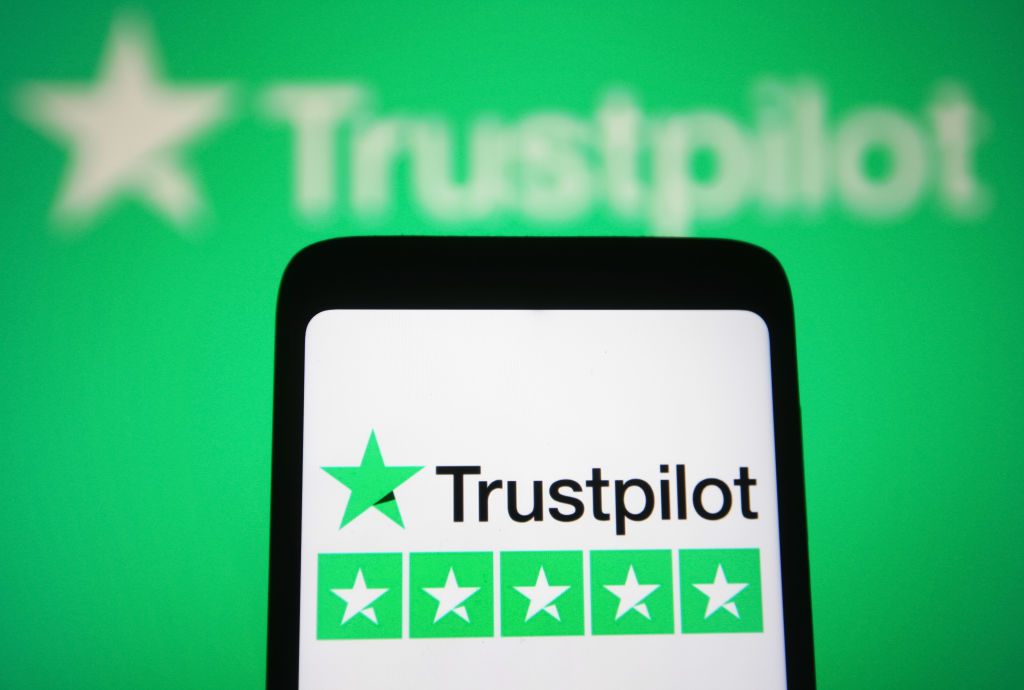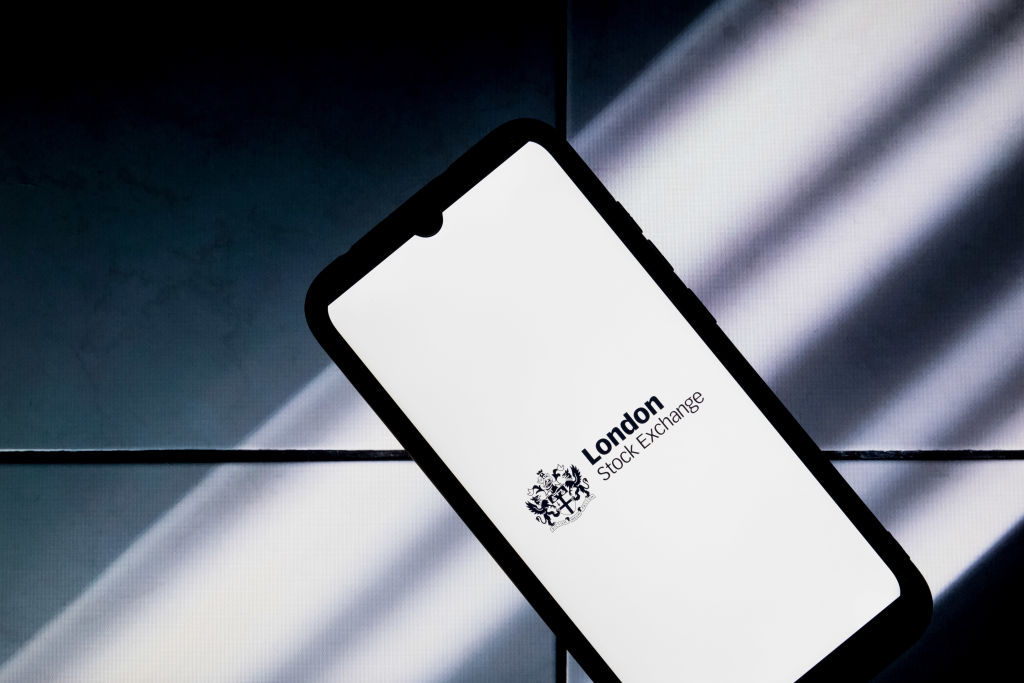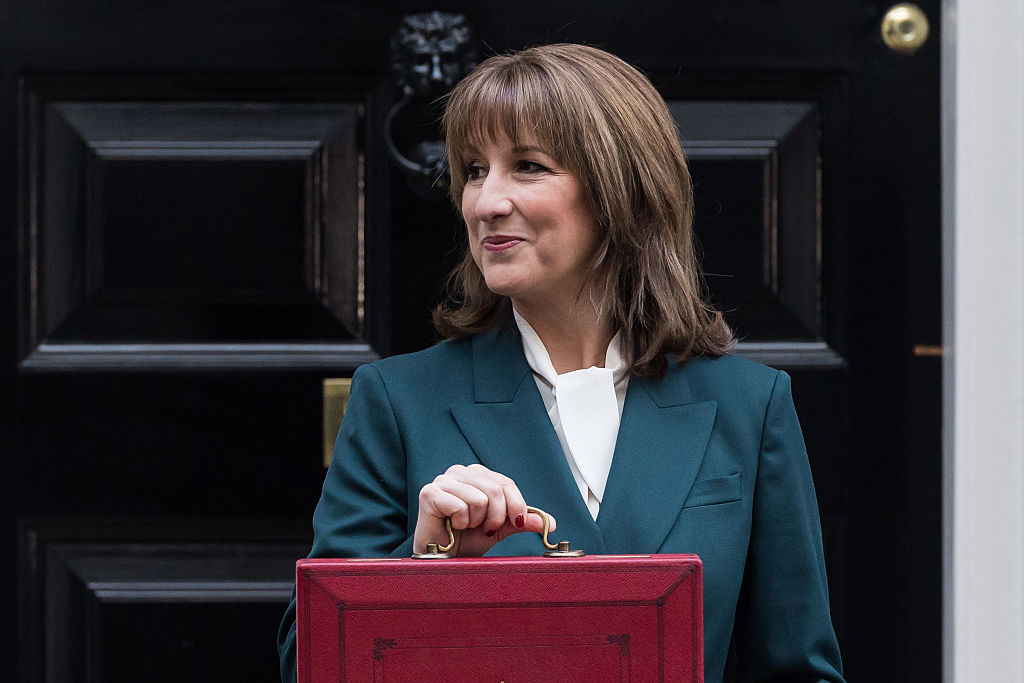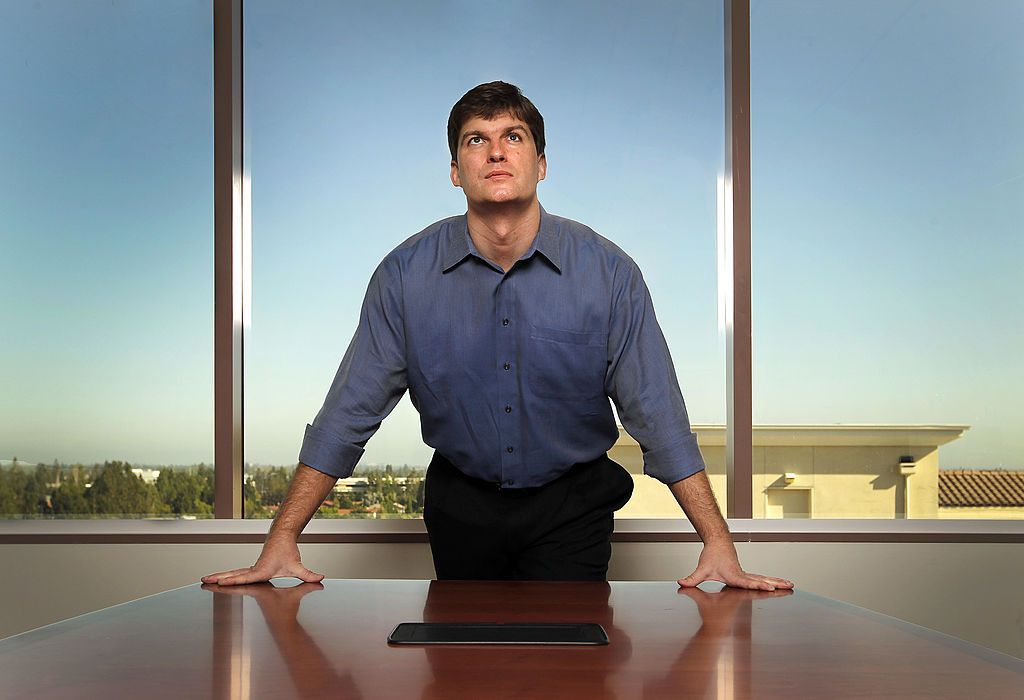Who’s driving Tesla?
As Elon Musk steps back from government with his eyes on the stars, investors ask if he’s still behind the wheel at his electric-car maker.


There was widespread consternation among investors on 2 April when Tesla posted its first-quarter production update. Deliveries fell 9% year-over-year to 336,681, the lowest such figure since the war in Ukraine broke out. In searching for answers, many pointed the finger squarely at one man: Tesla’s maverick CEO, Elon Musk. Musk has been a controversial figure with the population at large for years now, but investors have, on the whole, always been behind him. Whatever one’s view of his idiosyncrasies and political leanings, Musk has an undeniable record of delivering extraordinary business results.
The slump in deliveries bucked this trend. Musk appears to have made the brand toxic through his vocal support for US president Donald Trump. The firm also faces stiff competition from China’s electric-vehicle (EV) success story BYD. BYD overtook Tesla to become the world’s largest producer of EVs in 2024. Its low prices have put heavy pressure on Tesla’s margins.
Ross Gerber, president and CEO of Gerber Kawasaki, a California-based wealth and investment management firm, is a long-standing and prominent Tesla investor. Having initially bought into the company because of an admiration for Musk, he is, like Musk himself, not afraid to speak his mind, particularly on what he sees as the CEO’s shortcomings. “Tesla has two main issues,” Gerber tells MoneyWeek. “And they’re both created by Elon [Musk].” The first issue is that some potential customers are shunning the brand because they disagree with Musk’s politics. The other problem is whether or not the uptake on June’s long-awaited robotaxi launch will meet Musk’s hype.
MoneyWeek
Subscribe to MoneyWeek today and get your first six magazine issues absolutely FREE

Sign up to Money Morning
Don't miss the latest investment and personal finances news, market analysis, plus money-saving tips with our free twice-daily newsletter
Don't miss the latest investment and personal finances news, market analysis, plus money-saving tips with our free twice-daily newsletter
In Musk’s defence, Tesla revamped its entire production line during the first quarter, hitting output of its most popular Model Y. But subsequent European sales data showing a 49% slump in April belie the notion that the first-quarter miss was a one-off. Large swathes of Tesla’s potential market have apparently been alienated by its CEO’s five-month stint in Trump’s government. The story of Musk’s role in the Trump administration caused Tesla brand damage and put a “black cloud over the story”, said Daniel Ives, head of technology research at Wedbush Securities, in a research note in May.
Laser-focused on the robotaxi revolution
There are, in other words, grains of undeniable truth in the notion that Musk is becoming less of an asset for Tesla, and more of a liability. Musk hasn’t been fully behind Tesla’s wheel, at a point in time when the company is not quite ready to drive itself. June’s long-delayed “robotaxi” roll-out is the literal manifestation of that conundrum. It is the most important event in Tesla’s recent history. Most of Tesla’s approximately $1 trillion market capitalisation is predicated on the notion that it will be the market leader in the self-driving car revolution that many believe is about to hit the world.
The entire business model of Tesla is going to transform when the robotaxi launches, says Brett Winton, chief futurist at ARK Invest. “You go from a one-time sale of the vehicle at low margin to generating ongoing revenue off every vehicle in the fleet over time.” Musk reasserted during Tesla’s first-quarter earnings call that this launch, which has been much-delayed over recent years, will happen imminently. “We expect to be selling fully autonomous rides in June in Austin,” Musk said on the earnings call. That is the big one to look out for this month: Bloomberg suggests 12 June will be the date.
Musk also said that he is “laser-focused” on this launch. But his other major announcement grabbed far more headlines, and perhaps contradicts this statement: he announced that he was stepping back from his work for the Trump administration and its Department for Government Efficiency (DOGE), and that he would be spending only “a day or two per week on government matters” from May. As of 28 May, it appeared that Musk was stepping away from DOGE entirely. The $2 trillion in savings he first promised turned out to be a mere $175 billion, according to DOGE. Investors would be forgiven for asking if it was worth the (perhaps irreversible) damage his five months there has dealt Tesla’s brand.
The ironic upshot is that Musk's proximity to Trump appears to have backfired, even on its own terms. This week, Tesla shares slumped as the two entered a scathing war of words with one another, following Musk's criticism of Trump's 'big, beautiful bill'.
Even without DOGE, Musk remains a busy man. There is his X social-media platform, formerly Twitter, which for Musk is both a job and a fairly time-consuming hobby. There is xAI, Musk’s OpenAI competitor, which he recently used to buy X from himself. Then there is Neuralink, the company behind futuristic brain implants that let people communicate with computers using their minds. Above all, there is Space Exploration Technologies (SpaceX).
SpaceX is also at a crux point. The satellite company is already providing internet, via Starlink, to five million people, and has become the dominant player in the booming space industry. “SpaceX’s strategic partnerships, competitive pricing, and continual innovation provide a high barrier to entry,” Hamish Maxwell, director and investment specialist at Scottish Mortgage Investment Trust, tells MoneyWeek. It “has a ‘de facto monopoly’ in rocket launches due to its high frequency of launches and cost advantages from reusable rockets”. But SpaceX’s last three Starship test launches have ended in failure. Musk posted a presentation on X soon after the latest setback that clarified his vision of sending hundreds of manned ships to Mars by 2033.
Given his lofty ambitions for SpaceX, as well as his duties at DOGE for the first five months of the year, it is unsurprising that investors have been all but reduced to begging Musk to dedicate more time to Tesla. Pension funds including the New York City Comptroller and the American Federation of Teachers wrote to Tesla’s board demanding that the CEO work a 40-hour week (in exchange for the $100 billion or so in stock Tesla wants the courts to let it pay him) on the same day he posted his SpaceX presentation.
Might Musk be replaced as CEO?
Following April’s earnings release there was widespread talk that Tesla’s board was contemplating what might have previously been unthinkable: replacing Musk as CEO of the business. On 1 May, The Wall Street Journal reported that Tesla had engaged a headhunting firm to seek out a new CEO around a month earlier. Both Musk and Tesla denied the reports. Tesla’s chair, Robyn Denholm, posted on X that “The CEO of Tesla is Elon Musk and the Board is highly confident in his ability to continue executing on the exciting growth plan ahead.”
Indeed, it now looks as though Denholm would be the more likely of the two to leave Tesla, and that if Musk were to be replaced as CEO, it would be because he had taken her place as chair. Denholm has sold more than 1.4 million shares in Tesla and now has just 85,000 left, in addition to around 49,000 stock options, according to a report in May in The New York Times.
“Denholm wants out,” says Gerber. “She can get out, and then Musk can be chairman.” In practice, though, that would still leave Musk as the most influential figure in Tesla’s day-to-day operations. “Musk doesn’t want to go anywhere… he’s going to take over Tesla again, and run it as he sees fit,” says Gerber.
Musk’s apparent lack of interest in Tesla could be intellectual boredom. He has considered the carmaker’s next major challenge, autonomous driving, a “solved problem” since 2018. In fairness, he may be right. Tesla’s latest vehicle safety report shows that Teslas with autopilot technology enabled registered one crash for every 7.44 million miles driven; the national average in the US is one every 702,000 miles. It is headline news whenever a tech-assisted car crashes, particularly a Tesla, but it’s actually a relatively rare event. The main blocker to Tesla’s robotaxi hitting the road may not be safety, but regulation; what Ives calls “the federal regulatory spiderweb”.
At heart, Musk is an engineer. “He’s really good at manufacturing, and on a massive scale,” says Gerber. “He operates on a business philosophy that lacks fear, so when he sees an opportunity, he wants it to scale immediately to that opportunity’s potential.”
Despite all the controversies, Musk has been the undoubted driving force behind Tesla’s meteoric rise over the last 15 years. At a crunch point for the firm in 2008 he injected millions of his own dollars into Tesla to keep it afloat, borrowing money from SpaceX (with Nasa’s approval) in order to do so. Generating funding, including from the government, is among Musk’s key strengths, according to Gerber. “But his other real talent, the part that I find inspiring, is his ability to get the best out of people and build the best teams I’ve ever seen,” he says. “The culture at Tesla, although not ideal from a human standpoint, is incredible from a success standpoint. Nobody there isn’t really good at what they do, and if you don’t cut it, you’re out.”
Musk has other businesses in his portfolio that are closer to the fast-scaling phase than Tesla, particularly SpaceX. This is truly Musk’s baby. Unlike Tesla, he founded it himself, in 2002, six years before he joined Tesla. He may well be more motivated by SpaceX’s interstellar mission than Tesla’s autonomy bid, which, he feels, is a nut he’s already cracked.
How (and whether) to invest in Musk
The stakes are astronomically high for Tesla. Its valuation (around 208 times trailing earnings at the time of writing) makes no sense at all if it is judged purely as a car-selling company. But if it truly cracks autonomy – self-driving “robotaxis” as well as autonomous robots – in the way that Musk insists it will, then Ives thinks its market cap could double to more than $2 trillion by the end of 2026. “We believe Tesla remains the most undervalued artificial-intelligence play in the market today,” he says.
Scottish Mortgage (LSE: SMT) has a very small shareholding in Tesla (0.81% of assets as of 31 March); it sold off most of its stake in the wake of last year’s election, when the stock surged based on optimism over Musk’s proximity to the incoming administration. But it has a very significant stake in SpaceX. As of 30 April, SpaceX was the trust’s top holding, with 7.8% of assets. Scottish Mortgage first bought the company in 2018 when it was valued at $31 billion. “We were excited by the long-term potential of the cost and capability improvements SpaceX was opening up, which we believed had the potential to transform the space industry,” says Maxwell, “and the diverse revenue opportunities being unlocked in areas such as global satellite internet connectivity and space logistics.” By the end of 2024 SpaceX’s value had risen to $350 billion. Investment trusts like Scottish Mortgage are the best way for most investors to gain exposure. Baillie Gifford (which manages SMT) also holds SpaceX through other trusts such as Edinburgh Worldwide, Schiehallion, and US Growth.
Investors who want to boost their exposure to Tesla can invest in thematic exchange-traded funds such as ARK’s Artificial Intelligence & Robotics UCITS ETF (LSE: ARKI) or its flagship Innovation fund (LSE: ARKK). ARK’s CEO, Cathie Wood, is a prominent and long-standing Tesla bull, who believes its share price could reach $2,600. That might sound a little pie-inthe-sky, but even Gerber underscores the peril of betting against Musk. “I would never underestimate him. That’s one of the things I warn people,” he says. “That’s why I’m not a short-seller or a hater, per se.”
This article was first published in MoneyWeek's magazine. Enjoy exclusive early access to news, opinion and analysis from our team of financial experts with a MoneyWeek subscription.
Get the latest financial news, insights and expert analysis from our award-winning MoneyWeek team, to help you understand what really matters when it comes to your finances.

Dan is a financial journalist who, prior to joining MoneyWeek, spent five years writing for OPTO, an investment magazine focused on growth and technology stocks, ETFs and thematic investing.
Before becoming a writer, Dan spent six years working in talent acquisition in the tech sector, including for credit scoring start-up ClearScore where he first developed an interest in personal finance.
Dan studied Social Anthropology and Management at Sidney Sussex College and the Judge Business School, Cambridge University. Outside finance, he also enjoys travel writing, and has edited two published travel books.
-
 Why Trustpilot is a stock to watch for e-commerce exposure
Why Trustpilot is a stock to watch for e-commerce exposureTrustpilot has built a defensible position in one of the most critical areas of the internet: the infrastructure of trust, says Jamie Ward
-
 Tetragon Financial: An investment trust with stellar returns
Tetragon Financial: An investment trust with stellar returnsTetragon Financial has performed very well, but it won't appeal to most investors – there are clear reasons for the huge discount, says Rupert Hargreaves
-
 Why Trustpilot is a stock to watch for exposure to the e-commerce market
Why Trustpilot is a stock to watch for exposure to the e-commerce marketTrustpilot has built a defensible position in one of the most critical areas of the internet: the infrastructure of trust, says Jamie Ward
-
 Tetragon Financial: An exotic investment trust producing stellar returns
Tetragon Financial: An exotic investment trust producing stellar returnsTetragon Financial has performed very well, but it won't appeal to most investors – there are clear reasons for the huge discount, says Rupert Hargreaves
-
 How to capitalise on the pessimism around Britain's stock market
How to capitalise on the pessimism around Britain's stock marketOpinion There was little in the Budget to prop up Britain's stock market, but opportunities are hiding in plain sight. Investors should take advantage while they can
-
 London claims victory in the Brexit wars
London claims victory in the Brexit warsOpinion JPMorgan Chase's decision to build a new headquarters in London is a huge vote of confidence and a sign that the City will remain Europe's key financial hub
-
 The consequences of the Autumn Budget – and what it means for the UK economy
The consequences of the Autumn Budget – and what it means for the UK economyOpinion A directionless and floundering government has ducked the hard choices at the Autumn Budget, says Simon Wilson
-
 Reinventing the high street – how to invest in the retailers driving the change
Reinventing the high street – how to invest in the retailers driving the changeThe high street brands that can make shopping and leisure an enjoyable experience will thrive, says Maryam Cockar
-
 8 of the best houses for sale with electric vehicle charging
8 of the best houses for sale with electric vehicle chargingThe best houses for sale with electric vehicle charging – from a converted World War II control tower in Scotland, to a Victorian country house in Cumbria
-
 Big Short investor Michael Burry closes hedge fund Scion Capital
Big Short investor Michael Burry closes hedge fund Scion CapitalProfile Michael Burry rightly bet against the US mortgage market before the 2008 crisis. Now he is worried about the AI boom